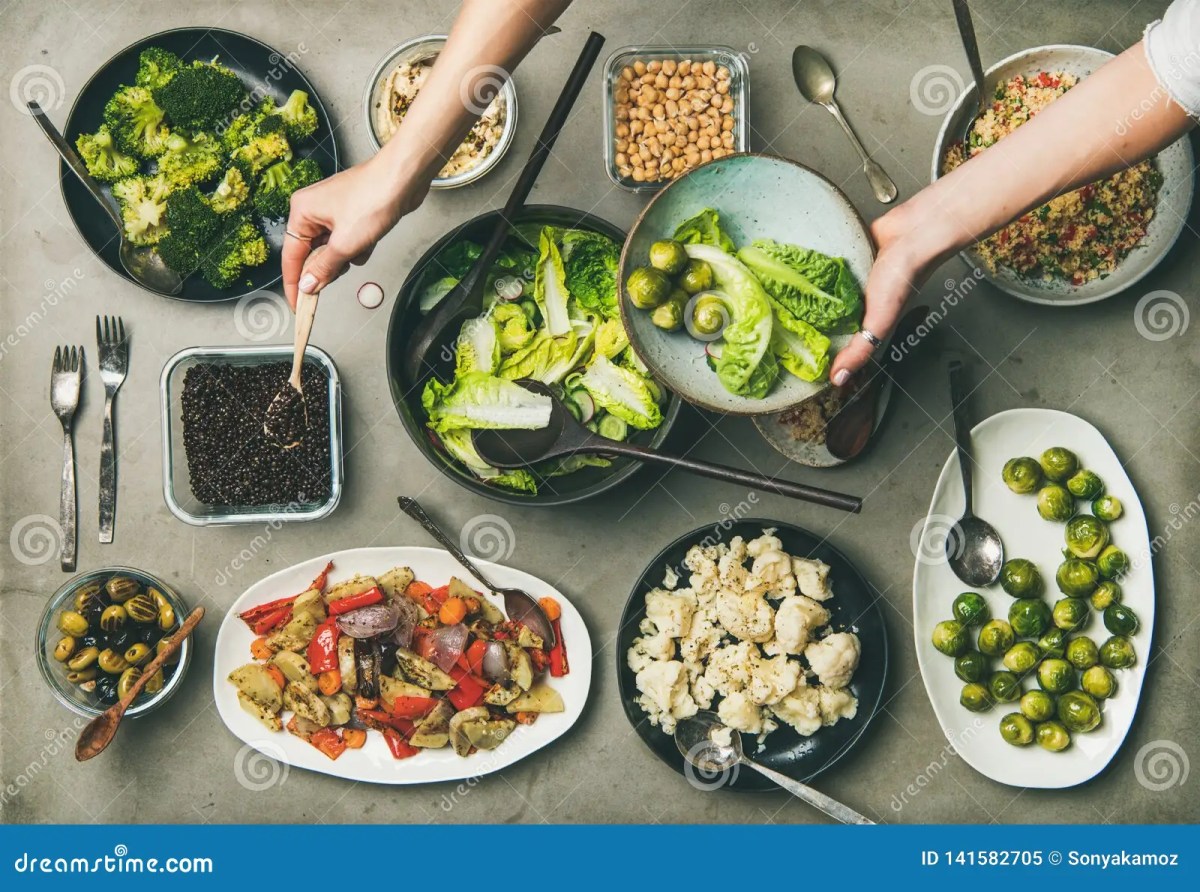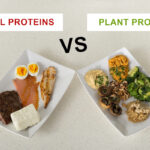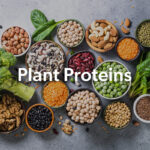Imagine a vibrant table, a symphony of colors and textures. A succulent, herb-roasted chicken breast sits beside a vibrant medley of roasted vegetables, their earthy tones contrasting beautifully with the golden-brown hues of the chicken. Nearby, a creamy cashew-based pasta, its rich, ivory color a stark yet harmonious counterpoint, awaits. This is the essence of combining vegan and flexitarian dishes: a culinary adventure where diverse flavors and dietary needs converge in perfect harmony. This guide explores the art of creating balanced, delicious meals that satisfy both vegan and flexitarian diners, offering practical strategies for menu planning, recipe adaptation, and presentation techniques that transform a simple meal into a truly memorable dining experience.
From crafting weekly meal plans that seamlessly integrate both dietary styles to mastering the art of flavor pairing and visually stunning presentations, we’ll uncover the secrets to hosting successful gatherings that cater to everyone. We’ll delve into the specifics of ingredient substitutions, cooking techniques, and address common concerns, empowering you to confidently create meals that are not only delicious but also reflect your commitment to diverse dietary preferences.
Planning a Balanced Menu

Creating a harmonious blend of vegan and flexitarian dishes requires careful meal planning to ensure both nutritional completeness and culinary satisfaction. A well-structured weekly menu can provide a delicious and healthy eating experience while accommodating diverse dietary needs. This involves thoughtful consideration of macronutrient balance, variety in food groups, and the incorporation of both plant-based and animal-derived proteins.
A Sample Weekly Meal Plan
A balanced weekly meal plan incorporating both vegan and flexitarian options can be easily achieved. The following table demonstrates a sample plan, showcasing the diversity achievable within a week:
| Day | Meal | Vegan Dish | Flexitarian Dish |
|---|---|---|---|
| Monday | Dinner | Lentil Shepherd’s Pie with sweet potato topping | Baked Salmon with roasted asparagus |
| Tuesday | Lunch | Quinoa salad with roasted vegetables and chickpeas | Chicken Caesar salad (using vegan Caesar dressing for part of the salad) |
| Wednesday | Dinner | Vegan curry with brown rice | Grilled chicken or tofu stir-fry with brown rice |
| Thursday | Lunch | Black bean soup with cornbread | Tuna salad sandwich on whole-wheat bread |
| Friday | Dinner | Pasta with marinara sauce and vegetables | Spaghetti carbonara (using vegan bacon for a portion) |
| Saturday | Lunch | Vegan chili | Leftover spaghetti carbonara |
| Sunday | Dinner | Vegan lasagna | Roast chicken with roasted root vegetables |
Visual Representation of a Balanced Plate
Imagine a vibrant plate, a colorful tapestry of textures and flavors. Approximately 60% of the plate is filled with a vibrant vegan stir-fry. Deep emerald green broccoli florets, their texture crisp-tender, mingle with ruby-red bell peppers, their sweetness subtly contrasting with the earthy tones of shiitake mushrooms. A scattering of toasted sesame seeds adds a delightful crunch, while a light, citrusy ginger-soy dressing coats everything in a glossy sheen. The remaining 40% features a generous portion of grilled salmon, its skin glistening with a golden-brown hue, its flesh exhibiting a delicate pink. A small mound of fluffy quinoa provides a neutral base, its mild flavor allowing the other elements to shine. The overall effect is one of visual harmony, a balance of colors and textures that reflects the nutritional balance of the meal.
Managing Dietary Restrictions and Preferences
Successfully combining vegan and flexitarian dishes requires careful consideration of individual dietary needs and preferences. When guests have allergies, clearly labeled dishes are essential. For example, separate serving bowls and utensils should be used for dishes containing common allergens such as nuts, soy, or gluten. Providing detailed ingredient lists for each dish allows guests to make informed choices. Accommodating specific preferences, such as vegetarianism or pescatarianism, is straightforward with a little planning. Offering a range of options ensures that everyone feels included and catered to, creating a positive and enjoyable dining experience for all.
Cooking Techniques and Methods
Mastering the art of combining vegan and flexitarian dishes lies in understanding and skillfully applying various cooking techniques. Both culinary styles share many methods, but subtle adjustments can elevate the overall dining experience, ensuring both flavors and textures complement each other harmoniously. This section explores techniques suitable for both, highlighting where differences might arise.
Successful integration of vegan and flexitarian dishes hinges on mindful cooking methods that preserve the integrity of each component while enhancing their collective appeal. This involves a balanced approach, considering the different cooking times and temperatures required for various ingredients, to ensure optimal texture and flavor development.
Cooking Methods for Vegan and Flexitarian Dishes
The following list details cooking techniques well-suited for both vegan and flexitarian dishes, highlighting any nuances in their application.
- Roasting: A versatile method for both. Roast vegetables like root vegetables and broccoli alongside meats like chicken or tofu for a unified, flavorful experience. Maintain appropriate spacing on the baking sheet to ensure even cooking. Vegan options might require a little extra oil for browning.
- Sautéing: Quickly cooks ingredients in a hot pan with a small amount of oil. Ideal for both vegan and flexitarian stir-fries. Sautéing tofu requires a little more care to avoid breaking it. Lean meats benefit from high-heat sautéing to sear the outside and keep the inside tender.
- Steaming: A gentle method that preserves nutrients and texture. Excellent for delicate vegetables like asparagus and green beans, as well as fish or chicken. Steaming tofu helps retain its moisture and subtle flavor.
- Grilling: Creates delicious char marks and smoky flavors. Great for vegetables like bell peppers and zucchini, as well as firm tofu, portobello mushrooms, and various meats. Adjust grilling time depending on the thickness and density of the ingredients.
- Braising: Slow cooking in liquid, ideal for tougher cuts of meat and hearty vegetables. Vegan braises often rely on deeply flavorful vegetable broths and long cooking times to tenderize ingredients like seitan or jackfruit.
Preparing a Multi-Course Vegan and Flexitarian Meal
Planning the timing and sequencing of dishes is crucial for a smooth and enjoyable dining experience. The following step-by-step guide demonstrates how to prepare a multi-course meal incorporating both vegan and flexitarian options.
- Appetizer (30 minutes before serving): Prepare a simple bruschetta with toasted baguette slices, topped with a vibrant mix of roasted red peppers (vegan) and a whipped goat cheese (flexitarian) alongside balsamic glaze.
- Salad (15 minutes before serving): Toss a mixed green salad with a lemon vinaigrette. Add grilled halloumi (flexitarian) or toasted pumpkin seeds (vegan) for added texture and flavor.
- Main Course (45 minutes preparation, 20 minutes cooking): Simultaneously prepare a pan-seared salmon (flexitarian) and a hearty lentil stew (vegan). The salmon needs less cooking time than the stew, allowing for staggered completion.
- Dessert (prepared ahead): Offer a refreshing vegan sorbet alongside a light flexitarian fruit crumble.
Recipe: Roasted Vegetable and Chickpea Bowl with Optional Grilled Halloumi
This recipe showcases the seamless integration of vegan and flexitarian elements in a single dish. The vibrant roasted vegetables and chickpeas form the heart of a satisfying vegan bowl, while the addition of grilled halloumi offers a delicious flexitarian upgrade.
Ingredients:
- 1 large sweet potato, cubed
- 1 red bell pepper, chopped
- 1 zucchini, chopped
- 1 red onion, chopped
- 1 can (15 oz) chickpeas, drained and rinsed
- 2 tbsp olive oil
- 1 tsp smoked paprika
- ½ tsp cumin
- Salt and pepper to taste
- Optional: 200g halloumi cheese, sliced
- Fresh cilantro, chopped (for garnish)
Instructions:
- Preheat oven to 400°F (200°C).
- In a large bowl, toss sweet potato, bell pepper, zucchini, red onion, and chickpeas with olive oil, smoked paprika, cumin, salt, and pepper.
- Spread the mixture evenly on a baking sheet.
- If using halloumi, place the slices on a separate baking sheet.
- Roast the vegetables and chickpeas for 25-30 minutes, or until tender and slightly browned. Roast halloumi for 10-12 minutes, or until golden brown and slightly charred.
- Serve the roasted vegetables and chickpeas in bowls, topped with the grilled halloumi (if using) and fresh cilantro.
Addressing Common Concerns
Blending vegan and flexitarian eating styles at the same table can spark anxieties, particularly around flavor balance, nutritional adequacy, and the perceived complexity of preparation. However, many of these concerns are easily addressed with thoughtful planning and a few key strategies. A successful mixed-diet meal hinges on understanding the nuances of both approaches and employing techniques that celebrate the unique qualities of each.
Misconceptions about Combining Diets
Many believe that combining vegan and flexitarian meals necessitates a significant increase in cooking time and effort. This is often untrue. The key lies in selecting recipes that share common preparation methods or ingredients, maximizing efficiency. For instance, roasting vegetables for a vegan side dish can simultaneously complement a flexitarian main course that also incorporates roasted elements. Another misconception is that a balanced meal is impossible without sacrificing flavor or variety. In reality, carefully chosen vegan and flexitarian components can create a richer and more interesting culinary experience, playing with textures and taste profiles to achieve a satisfying whole. The perception that vegan dishes are inherently bland is simply false, with countless flavorful recipes demonstrating the rich potential of plant-based cuisine.
Challenges in Meal Preparation and Solutions
A primary challenge lies in ensuring everyone at the table feels satisfied. A flexitarian guest might feel their portion is insufficient if the meal centers heavily on vegan dishes, while a vegan guest might feel excluded if the focus is solely on meat-based options. The solution involves careful portioning and thoughtful ingredient selection. For example, a hearty lentil stew (vegan) served alongside grilled salmon (flexitarian) ensures both dietary needs are met without compromising the overall meal’s aesthetic appeal. Another potential hurdle is managing differing cooking times and temperatures. Some vegan dishes require longer cooking times than their flexitarian counterparts. Strategic planning, like preparing components ahead of time or utilizing a combination of cooking methods (e.g., oven-roasting alongside pan-frying), can resolve this. Finally, ensuring enough variety in textures and flavors is crucial. A visually appealing spread with a range of colors and textures helps make the meal more engaging and satisfying for everyone. For instance, a vibrant salad with crunchy nuts and seeds alongside creamy vegan polenta provides both visual and textural contrast.
Creating a Delicious Vegan Side Dish
To illustrate a practical solution, let’s create a roasted sweet potato and black bean salad that beautifully complements a flexitarian main course. This side dish provides a vibrant color contrast, a satisfying texture, and a delicious flavor profile that won’t overpower other elements on the plate.
Step 1: Prepare the Sweet Potatoes. Wash and cube two large sweet potatoes into roughly one-inch pieces. Toss them with two tablespoons of olive oil, a teaspoon of smoked paprika, half a teaspoon of cumin, salt, and pepper. Spread the sweet potatoes in a single layer on a baking sheet.
Step 2: Roast the Sweet Potatoes. Roast the sweet potatoes in a preheated oven at 400°F (200°C) for 20-25 minutes, or until tender and slightly caramelized. Their edges should be slightly browned and crispy. The vibrant orange color will contrast beautifully with other dishes.
Step 3: Prepare the Black Beans. While the sweet potatoes roast, rinse and drain one can (15 ounces) of black beans. Their deep, dark color provides an excellent visual contrast to the sweet potatoes.
Step 4: Combine and Season. Once the sweet potatoes are cooked, add the black beans to the baking sheet. Add a handful of chopped cilantro for freshness and a squeeze of lime juice for acidity. Toss gently to combine. The cilantro’s bright green adds a further visual appeal.
Step 5: Serve. Serve the warm sweet potato and black bean salad alongside your chosen flexitarian main course. The combination of sweet, smoky, and earthy flavors provides a delicious and satisfying complement to almost any dish. The contrasting textures—soft sweet potatoes and firm black beans—create a pleasing mouthfeel.
Mastering the art of combining vegan and flexitarian dishes isn’t just about satisfying diverse palates; it’s about creating a shared dining experience that celebrates culinary creativity and inclusivity. By understanding the principles of balanced menu planning, mindful recipe adaptation, and artful presentation, you can transform your meals into a vibrant tapestry of flavors and textures, leaving every guest feeling nourished and delighted. So, embrace the challenge, experiment with different flavor combinations, and let your culinary creativity shine as you craft meals that are both delicious and deeply satisfying for all.
Q&A
What are the key differences between vegan and flexitarian diets?
Vegan diets exclude all animal products, while flexitarian diets are primarily plant-based but allow occasional meat consumption.
How do I ensure everyone feels included when serving a mixed meal?
Clearly label dishes, offer ample vegan and flexitarian options, and communicate dietary needs beforehand to avoid any surprises.
What if I don’t have time to prepare completely separate meals?
Focus on recipes that naturally lend themselves to both dietary styles, such as stir-fries or grain bowls, with separate protein options.
Are there any specific nutritional considerations when combining these diets?
Ensure both sides of the meal provide a balance of protein, carbohydrates, and healthy fats. Pay attention to vitamin B12 intake for vegans.


